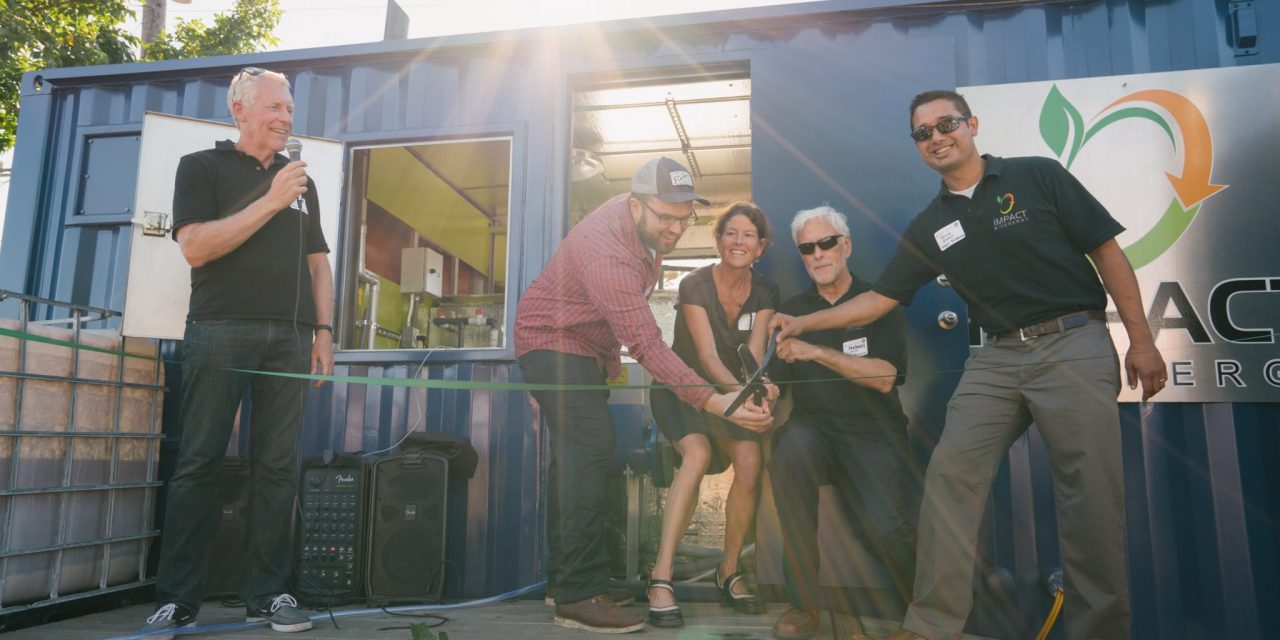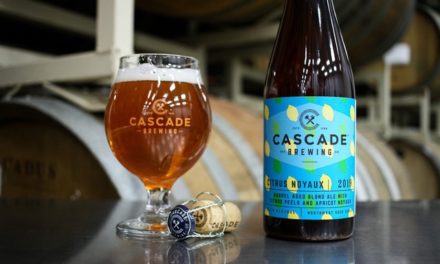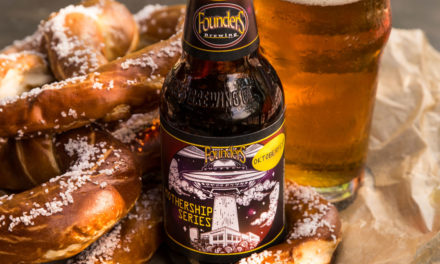There’s a large blue HORSE taking up several prime parking spaces at Fremont Brewing in Seattle. Owner Matt Lincecum can see if from his office window.
“I’m looking at it right now,” he says. “It’s a public/private partnership between us, the state of Washington and a local bioenergy company where we take a small-but-significant portion of our liquid and solid waste and convert it into electricity.”
The blue shipping container in Fremont’s parking lot houses the country’s first portable bioenergy plant. Called HORSE (for High-solids Organic-waste Recycling System with Electrical Output), the unit is capable of turning roughly 1,000 pounds of organic waste per week into usable electricity and nearly 100 gallons of organic fertilizer, all with zero waste. It isn’t nearly enough capacity to handle the spent grain generated by the 60,000 barrels of beer Fremont produced last year—most of that is given away to local cattle farmers—but it is enough to prove the concept and provide a sustainable energy source for the neighborhood, including Fremont’s sales fleet of Prii (yes, that’s the plural of Prius—I looked it up).
As Fremont has grown from a “scrappy” start-up brewery in 2009 to, in 2016, opening a second, much larger production facility, expanding distribution, and inking a deal with Alaska Airlines to be included on its flights, the brewery’s leadership has consistently reinvested profits into the well-being of the company’s employees and into initiatives that help reduce the carbon footprint of its operations.
Fremont has converted all of its facilities to LED lighting, for example, and transformed a quarter of its total roof square footage into rain gardens, which collect sufficient water to irrigate the company’s landscaping. The brewery has also installed highly efficient water meters and monitoring equipment, which have helped propel Fremont into the top tier of breweries nationwide for its beer-to-water use ratio—landing it in the same category as heavyweights New Belgium and Sierra Nevada.
The case for sustainability is an easy one to make in brewing, as it is any agriculturally based manufacturing process. There are a lot of inputs and potential for energy savings. The question is how far to take it and what kind of impact, both environmentally and financially, do these efforts have?
The best way to increase sustainability, Lincecum suggests, is to start by identifying where a brewery can realize the most savings—like energy and water use—as well as where the company can commit resources. It doesn’t do any good to know how much electricity you’re using if you don’t have the funds to put efficiency measures in place.
“Spend time and money on things that can have an immediate effect,” Lincecum says. “Do those first and then move on to the next.”
Over time, those small measures—like Fremont’s HORSE experiment—can multiply to have a meaningful impact. Just don’t expect customers to sing your company’s praises or even to realize a significant return on the investment; there are financial benefits to be had, but lasting sustainability efforts have more to do with a company’s culture and its priorities.
“I can’t tell you it’s a good way to spend money,” Lincecum says. “If you just look at it strictly from a business sense, it’s not what drives our success. We do it because it’s the right thing to do.”











